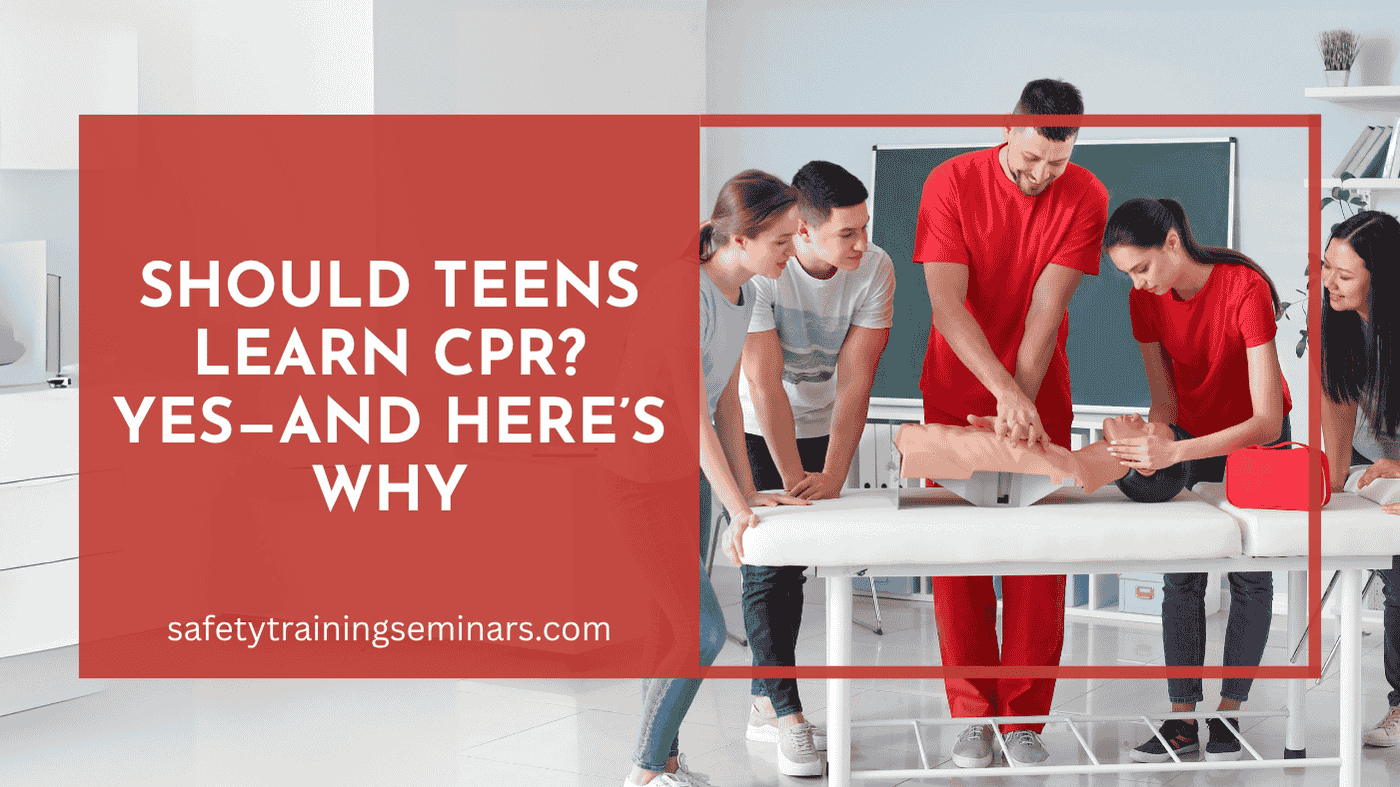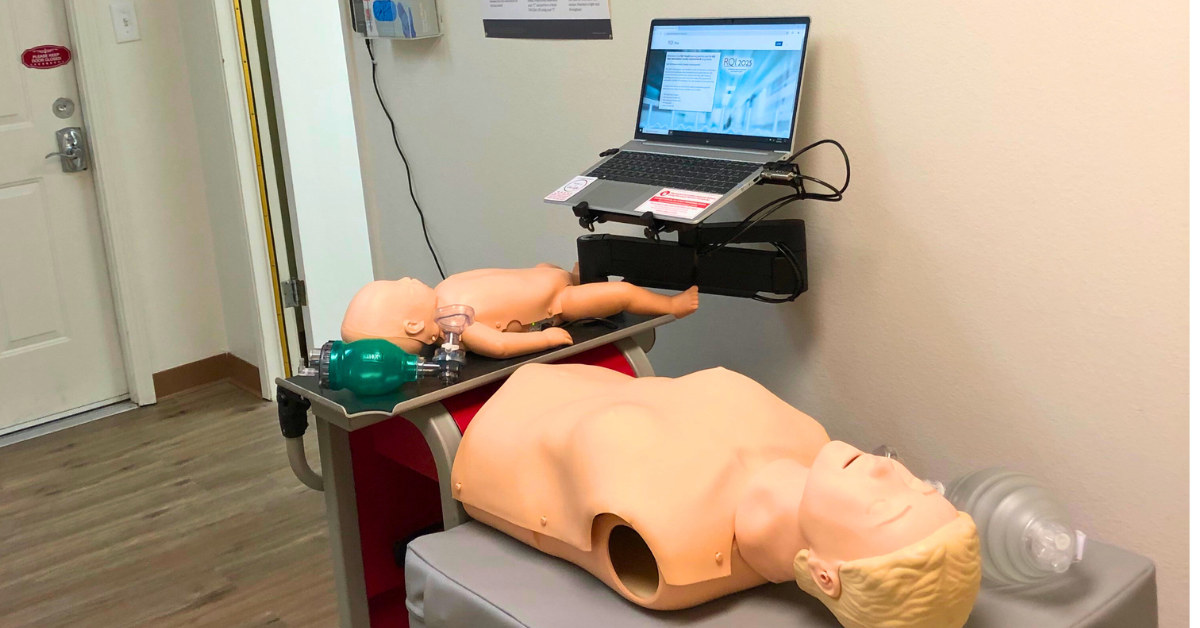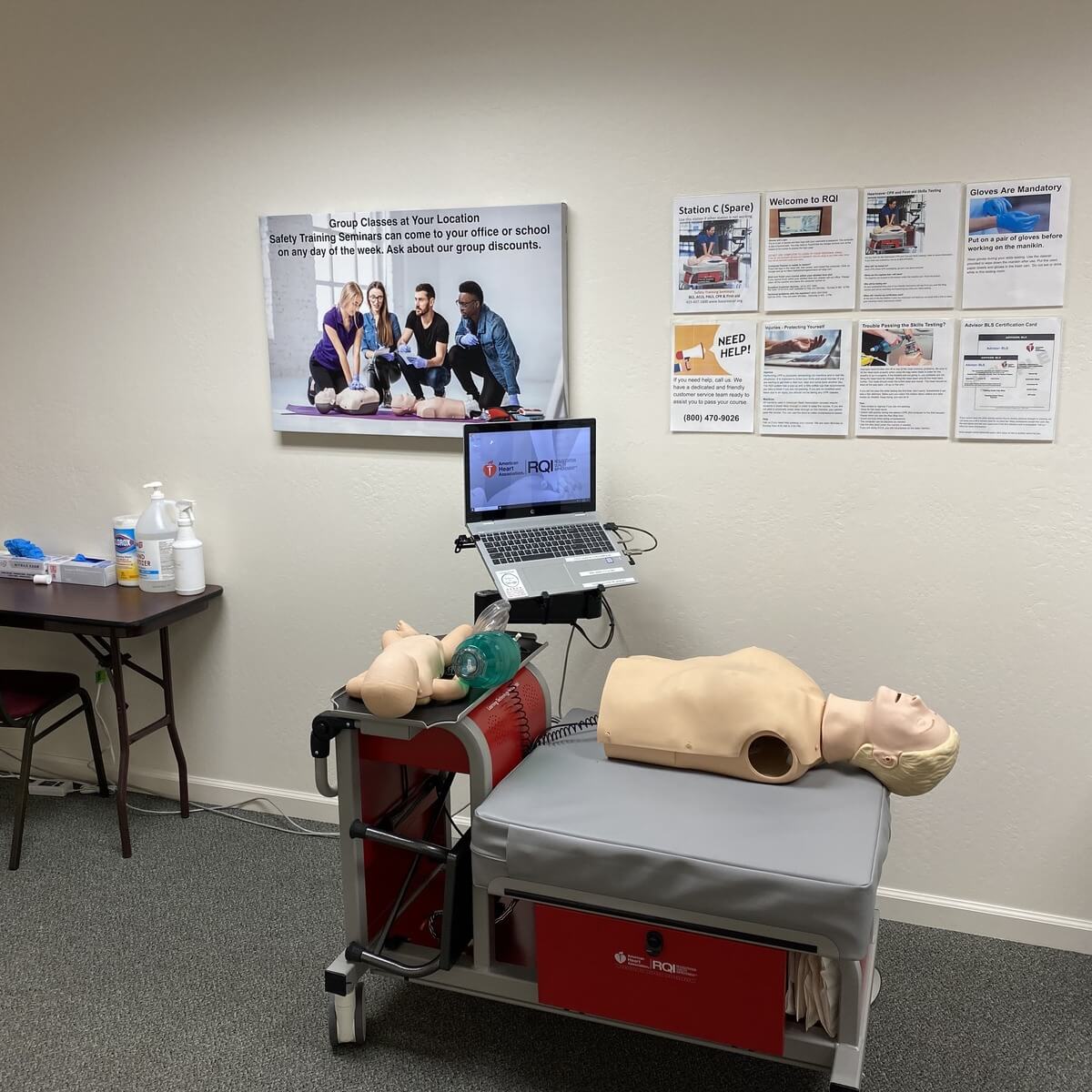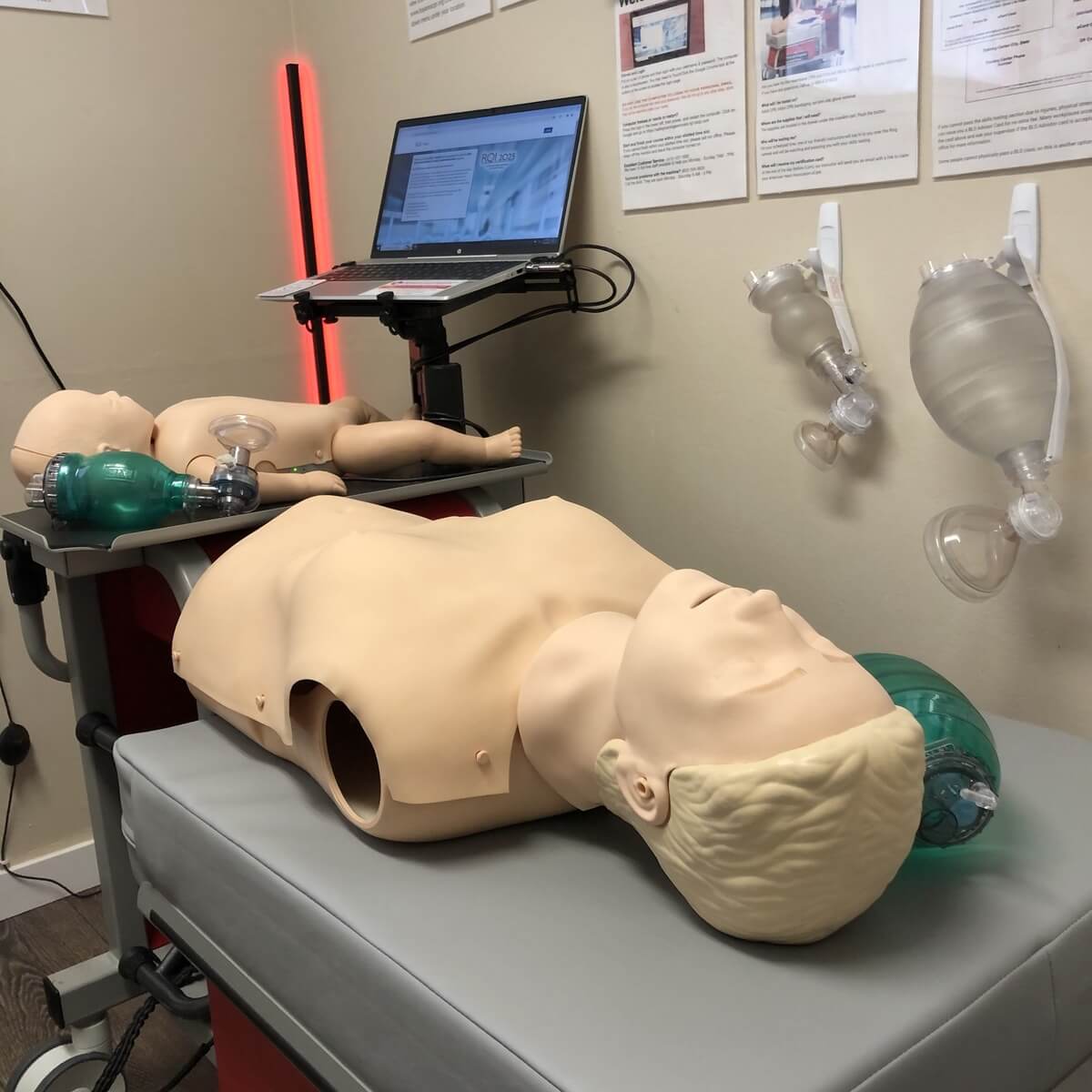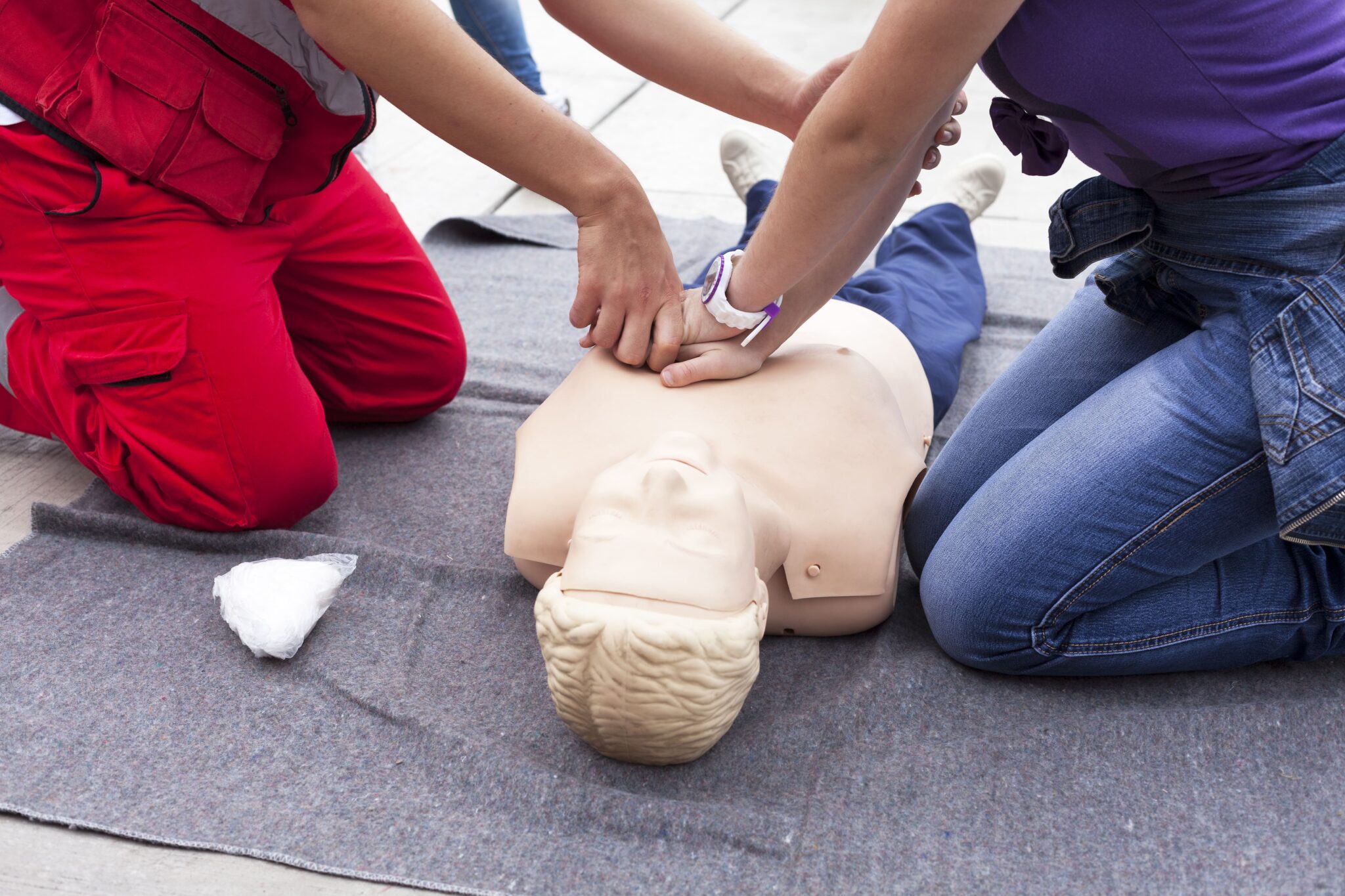Yes, teenagers should absolutely learn CPR. This life-saving skill can mean the difference between life and death in emergency situations. When teens know CPR, they become empowered first responders who can act quickly when adults aren’t around.
Most cardiac emergencies happen at home, where teens spend significant time with family members. Teaching CPR to teenagers creates a generation of confident responders who can save lives in their communities.
Why CPR Training Matters for Teenagers
Cardiac arrest strikes without warning. It affects people of all ages, from infants to older adults. When someone’s heart stops beating, brain damage begins within four to six minutes. Professional emergency responders often can’t arrive that quickly.
This is where trained teenagers become heroes. They can start CPR immediately, keeping blood flowing to the brain and vital organs until paramedics arrive.
The American Heart Association reports that immediate CPR can double or triple survival chances. These statistics become even more meaningful when you consider that over 350,000 cardiac arrests occur outside hospitals each year in the United States.
Real-World Benefits of Teen CPR Training
Building Confidence in Crisis Situations
Teenagers who learn CPR develop confidence that extends beyond emergency response. They learn to think clearly under pressure and take decisive action when others freeze.
This confidence translates into other areas of life. Teens become more likely to step up as leaders in their schools and communities.
Creating Safer Schools and Communities
Schools with CPR-trained students become safer environments for everyone. Teachers, coaches, and other students benefit from having trained responders nearby during school hours.
Sports teams especially benefit from CPR training. Athletic activities carry higher risks of cardiac events, particularly in young athletes with undiagnosed heart conditions.
Preparing for Future Careers
Many career paths require CPR certification. These include:
- Healthcare professions (nursing, medical assistants, therapists)
- Education (teachers, coaches, childcare workers)
- Public safety (police officers, firefighters, security guards)
- Recreation and fitness (lifeguards, personal trainers, camp counselors)
Learning CPR as a teenager gives students a head start on career preparation. They enter college or the workforce with valuable credentials already in place.
Common Concerns About Teen CPR Training
“Teenagers Aren’t Mature Enough”
This concern doesn’t hold up to scrutiny. Teenagers successfully perform CPR in real emergencies all the time. News stories regularly feature teen heroes who saved lives using their training.
The key is proper instruction. Quality CPR courses teach not just technique, but also when and how to respond appropriately.
“It’s Too Much Responsibility”
CPR training actually reduces pressure on teenagers. Without training, teens in emergency situations feel helpless and panicked. With training, they have clear steps to follow.
CPR courses emphasize calling 911 first. Teens learn they’re not solely responsible for saving lives—they’re buying time for professional help to arrive.
“The Training Is Too Expensive”
CPR training has become increasingly affordable. Many organizations offer courses specifically designed for students at reduced rates.
Safety Training Seminars, for example, provides American Heart Association certified courses with their low price guarantee. They offer both general public courses and specialized programs for different age groups.
What Teens Learn in CPR Courses
Basic Life Support Skills
Modern CPR courses teach comprehensive life support skills:
- Chest compressions: Proper hand placement, compression depth, and rhythm
- Rescue breathing: Mouth-to-mouth resuscitation techniques
- AED use: Operating automated external defibrillators safely
- Choking response: Heimlich maneuver for different age groups
Recognition of Emergencies
Students learn to recognize cardiac arrest, choking, and other life-threatening situations. This includes understanding when someone needs help versus when they’re simply unconscious or sleeping.
Team Response and Communication
CPR courses emphasize teamwork. Students learn how to direct others during emergencies, communicate with 911 dispatchers, and coordinate with arriving paramedics.
Age-Appropriate Training Options
High School Programs
Many high schools now include CPR training in health education curricula. These programs often partner with local emergency services or certified training centers.
School-based programs work well because they reach large numbers of students efficiently. They also create peer support networks where students can practice and reinforce their skills together.
Community-Based Courses
Community organizations frequently offer CPR classes for teenagers. These include:
- Youth organizations (Boy Scouts, Girl Scouts, 4-H clubs)
- Religious institutions
- Recreation centers
- Local fire departments
Online and Blended Learning
Modern CPR training often combines online learning with hands-on practice. Students complete knowledge portions at home, then attend shorter in-person sessions for skills testing.
This approach works well for busy teenagers. It allows flexible scheduling while ensuring proper hands-on training with real equipment.
Making CPR Training Accessible
School Integration
The most effective approach involves integrating CPR training into existing school programs. This ensures all students receive training regardless of family income or transportation issues.
Some states now require CPR training for high school graduation. This mandate ensures comprehensive coverage while recognizing the importance of these skills.
Family and Community Support
Parents and community members can advocate for CPR training in schools. They can also arrange group training sessions through local organizations.
Community fundraising can sponsor training for students who might otherwise miss out. Local businesses often support these initiatives as part of their community involvement efforts.
Instructor Qualifications
Quality CPR training requires certified instructors. The American Heart Association maintains strict standards for training centers and instructors.
Safety Training Seminars exemplifies these standards. As an official American Heart Association Training Center, we provide certified instruction with guaranteed pass rates. Our programs serve both medical professionals and general public participants.
Long-Term Impact of Teen CPR Training
Lifelong Skills
CPR skills stay with people throughout their lives. Teens who learn CPR often maintain these skills through regular recertification as adults.
This creates a ripple effect. Trained adults teach family members, creating households where multiple people can respond to emergencies.
Community Resilience
Communities with more CPR-trained residents become more resilient. When emergencies occur, trained bystanders provide immediate response while professional help is en route.
This distributed response capability becomes especially important in rural areas or during natural disasters when professional responders may be delayed.
Cultural Shift
Teaching CPR to teenagers helps create a culture where emergency preparedness is normal and expected. This cultural shift benefits entire communities.
Young people influence their families and peer groups. When teens value emergency preparedness, they encourage others to get training too.
Getting Started: Next Steps for Teens
Research Local Options
Start by researching CPR training options in your area. Look for American Heart Association certified programs that offer:
- Hands-on practice with real equipment
- Certified instructors
- Official certification cards
- Reasonable pricing
Choose the Right Course
Different courses serve different needs:
- Heartsaver CPR: General public training covering adult, child, and infant CPR
- Basic Life Support (BLS): More comprehensive training often required for healthcare careers
- First Aid combinations: CPR plus additional emergency response skills
Plan for Recertification
CPR certifications typically last two years. Plan to recertify regularly to maintain skills and stay current with updated techniques.
Safety Training Seminars offers renewal discounts for returning students. This makes ongoing training more affordable.
Your Next Step: Get Trained Today
Don’t wait for an emergency to wish you had CPR training—take action now and develop life-saving skills that could make all the difference.
Contact Safety Training Seminars to schedule your CPR course. With over 65 locations in Northern California, it’s easy to find one near you. Choose a trusted organization with proper certifications and flexible scheduling options.
Remember, the life you save might be someone you love. When every second counts, your training can be the difference.
For those seeking to build or renew their life-saving skills, accessible and certified training is essential. Options like BLS CPR Classes in Livermore and BLS CPR Classes in Folsom offer AHA-compliant instruction that’s perfect for healthcare professionals and community members alike, helping ensure readiness in any emergency situation.


